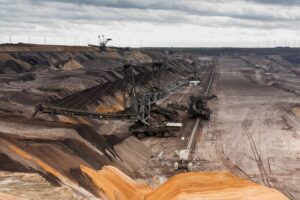Our top 5 emerging iron ore plays
![]() Marc Kennis, December 2, 2020
Marc Kennis, December 2, 2020
2 December 2020
One of the more remarkable things to have happened in the commodities world in recent days has been the rise in the iron ore price. Back in early April 2020 it was trading at US$81 a tonne, where ‘it’ was 63.5% Fe iron ore fines with the price of freight included when delivered to the Chinese port of Tianjin. That same high grade product is now changing hands in Tianjin at about US$130 a tonne, thanks to the reboot of the Chinese economy combined with supply constraints in Brazil as that country grapples to contain COVID-19. The iron ore recovery has been great news for various Australian suppliers, starting with BHP (ASX: BHP), Rio Tinto (ASX: RIO) and Fortescue Metals (ASX: FMG) and then extending to various emerging producers and developers.
Iron ore’s good times in 2020 have been a blessing to the Australian economy since this commodity is the nation’s largest source of export revenue, earning the country in excess of A$100bn a year. And the taxpayer benefits because of the huge iron ore royalties that flow to the government. Iron ore is a booming industry in Australia. In 2010 the country produced 433 million tonnes of iron ore. By 2019 this output had expanded to 919 million tonnes as new mines came on stream and existing mines were expanded. Iron ore has truly rewarded its True Believers this century, most notably Andrew Forrest with Fortescue, not to mention the legendary Gina Rinehart, who brought her first mine, Roy Hill in the Pilbara, into production in late 2015 after many years where the family fortune was built on the royalties from other companies mines.
The bull market the Brazilians created
Iron ore might be a great place to be right now, but in recent years times weren’t anywhere near as good. Between 2011 and 2016 the price of the commodity fell like a stone, from over US$180 a tonne to under US$40 a tonne, thanks to progressively weaker demand from steel makers and increased supply from Fortescue et. al. A gradual recovery started in 2016 and then came a spurt in 2019. That recovery wasn’t because steel makers needed more iron ore but because of the Brumadinho disaster of January 2019, when a tailings dam at an iron ore mine in Brazil failed.
Brumadinho is owned by Vale (NYSE: VALE), the Rio-based mining major which is the world’s largest iron ore miner. That company responded to Brumadinho by taking other dams in Brazil offline, and with it a substantial amount of iron ore output. By July 2019 iron ore was at US$120 a tonne. However, a reaction followed which took it back to US$80 by November 2019. Iron ore was recovering again before the onset of COVID temporarily disrupted markets. And, as we’ve seen, the good times have been with us in earnest for some months now thanks to better demand.
Watch out for China … and the currency
One concern on the horizon for the Australian iron ore industry is that China may stop taking Australian exports given the rising trade tensions between the two countries. Many industry observers don’t see that happening in the near future because right now China needs all the iron ore it can get and we’re the best place to get it from. Another potential issue for the iron ore miners is the strength of the Australian dollar. The higher that is – and it keeps wanting to go higher thanks to the strength of our economy and trade balance – the harder it will be for iron ore miners to maintain margins.
We’ve written a good deal about iron ore in Stocks Down Under. We recommend to you our articles on Grange Resources (ASX: GRR, 21 July 2020), Champion Iron (ASX: CIA, 28 July 2020) and Mt Gibson Iron (MGX, 6 August 2020), three emerging companies that are doing well in the current climate. We expect the ASX will become a good market for developing new iron ore projects in the months ahead. We note the recent back-door listing of Tombador Iron (ASX: TI1), developer of the Tombador iron ore project in the Brazilian state of Bahia, as well as the progress that Magnetite Mines (ASX: MGT) is making with its Razorback High Grade Iron Ore Concentrate Project in South Australia.
Has the current iron ore boom got some way to go?
It’s worth remembering that prices got close to US$200 a tonne back in early 2008. What industry observers are noting right now is that buyers are not paying premiums for higher grades. There are two main types of iron ore – hematite (56%-64 Fe) and magnetite (25-40% Fe). Hematite’s high iron content makes some grades suitable for putting straight into steel mills, a type of ore called ‘direct shipping’. Ordinarily the higher the percent Fe, the higher the price. However that’s not happening right now because steel mills are not in a position to greatly discriminate on grades. We believe that if and when the usual premiums come back, it might be a sign of the market topping. At the moment, the good times just keep coming for iron ore.
Want to become a better investor. Let us help you!
Get our 4 publications per week on ASX-listed
large, mid and small cap companies across all sectors
Model portfolios
Investor Webinars
Get access to all editions through a 30-day FREE TRIAL.
No credit card required!
Blog Categories
Get Our Top 5 ASX Stocks for FY26
Recent Posts
Webjet Sinks 22 Percent After Softer H1 Results and Weak Domestic Demand
Webjet Falls 22 Percent After H1 Revenue Dips and Domestic Flight Demand Softens Webjet (ASX: WJL) opened down 22 percent…
Javelin Minerals Jumps 2,900 Percent on Capital Consolidation
A Sharper Share Register Sets Javelin Minerals Up for Its Next Corporate Stage Javelin Minerals (ASX: JAV) surged an extraordinary…
Why Are Droneshield Shares Dropping and Should You Be Worried
DroneShield Selloff Tests Nerves, But Fundamentals Tell a Different Story DroneShield (ASX: DRO) experienced a sharp selloff this morning that…


